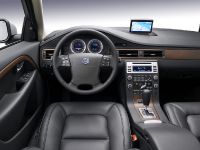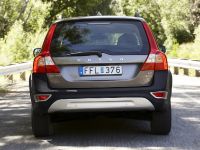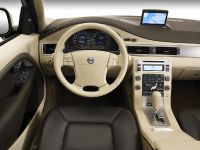Volvo Cars maps driver behaviour in advanced research project
About 100 Volvo V70 and XC70 cars, equipped with cameras and computers are included in a huge European field test project. All to monitor the driver's behaviour in order to gain more knowledge about how we react as human beings in complex traffic situations. The research project is part of the EU-project called EuroFOT (Field Operational Tests) where Volvo Cars, other actors from the automotive industry and SAFER at Chalmers University of Technology all are engaged.
Volvo Cars has studied and learned from real-life traffic accidents since the early seventies, in order to continuously improve the car's ability to protect its occupants in the event of an accident. The new vision of designing cars that don't crash requires new and entirely different research methods.
This project will also collect all types of driver behaviour, that means also how a driver can avoid a traffic accident from happening and what in the drivers behaviour made that possible.
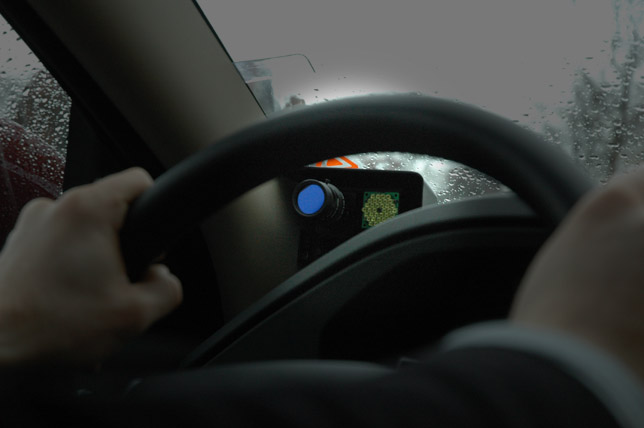
A fleet of a hundred Volvo cars, will be equipped with cameras that record the driver's head and eye movements, together with a data logger that records the information from the safety features in the car.
Other cameras will film the driver's view of the road, also behind the car. The information and the videos are saved on a hard disk from where the researchers can analyse the driver's head and eye movement patterns.
The field test project will last for three years. The overall ambition is to develop a safer, cleaner and more efficient road transportation system in Europe. Sweden has a leading position in the world when it comes to advanced collection of field data. Knowledge from an ongoing national FOT project, where Volvo Cars is a part and which is organised by SAFER research centre at Chalmers in Göteborg, will be used in the EuroFOT project.
"In order to move towards a crash-free future, we need to learn more about what kind of mistakes and situations that might lead to accidents," says John-Fredrik Grönvall, senior Research engineer and leader of the Field Operational Tests (FOT) at Volvo Cars.
About 3 million kilometres of everyday driving will be recorded and analysed by the researchers. The cars will be equipped with preventive safety features that already are available on the market today (see facts below).
"In Sweden, 150 Volvo vehicles will be included in the project; 100 cars and 50 trucks equipped with advanced logging devices. In addition, 275 vehicles in Europe will get less advanced equipment and another 1,000 responses will be secured by letting the drivers fill in a survey," says Trent Victor, research leader for Road User Behaviour at SAFER.
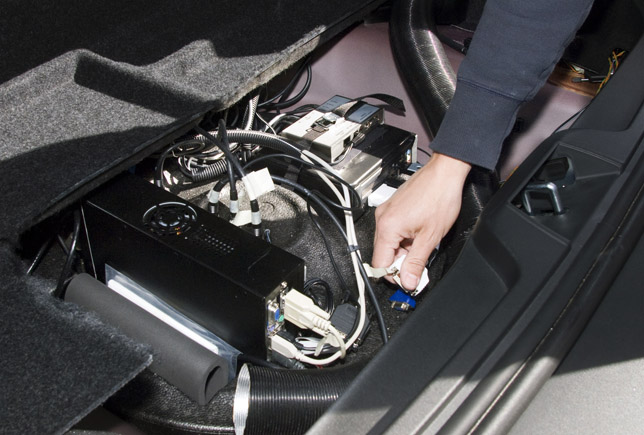
"This project gives us an opportunity to prove the effectiveness of today's range of preventive safety features and it will also help our engineers develop future safety solutions," continues John-Fredrik Grönvall.
"There will always be a need for individual flexibility and therefore a need for cars," says Helena Gellerman, project manager for SAFER. "The car industry has always been in the forefront with new technology. By competing successfully with the public transportation, they help pushing the borders towards a safer and more environmental friendly society."
All told, 28 partners from the automotive industry and academia are engaged in the EuroFOT.
The Swedish partners in EuroFOT are investing 72 million SEK over a three year period. The project kicked off in May 2008 and the total budget is 200 million SEK.
Volvo V70
Volvo XC70
Facts: Volvo Cars' safety vision is to design cars that should not crash. In the shorter perspective, the aim is that by 2020 no-one should be killed or injured in a Volvo. The strategy is to further develop supporting technologies that help prevent accidents from occurring in the first place.
The 100 Volvos will be equipped with cameras that record the driver's head and eye movements, together with a data logger that records the information from the safety features in the car. Other cameras will film the driver's view of the road. The signals and the videos are saved on a hard disk from where the researchers can analyse the driver's head and eye movement patterns.
The Volvo cars will also be equipped with the following preventive safety features: 1. CWAB (Collision Warning with Auto Brake) A feature that at speeds above 7 km/h warns the driver if a collision is imminent. If the driver fails to react, the car brakes automatically in order to reduce the force of collision.
2. ACC (Adaptive Cruise Control) An advanced cruise control system that adapts the vehicle's speed to match the flow of traffic. If the car approaches another vehicle from behind, the car lowers its speed and keeps a safe distance.
3. LDW (Lane Departure Warning) This feature alerts the driver of unintended lane drifting. The alert is activated if the lane markings are crossed without using the turn indicator.
4. DAC (Driver Alert Control) A feature that analyses the driving behaviour of the driver to discover signs of emerging sleepiness or loss of concentration. If such signs are discovered, the driver is urged to take a break and recover.
5. BLIS (Blind Spot Information System) A lamp located close to each side rear mirror warns if a vehicle is in the driver's blind spot.
About SAFER SAFER is a research centre within vehicle and traffic safety hosted by Chalmers University of Technology. It is a joint research unit where 22 partners from the Swedish automotive industry, academia and public authorities cooperate to make a centre of excellence within the field of vehicle and traffic safety. SAFER is a part in the EuroFOT-project.
EU-project EuroFOT - European Large-Scale Field Operational Tests on Vehicle Systems - consists of 28 partners. The Swedish partners are the Chalmers University of Technology, the Volvo Car Corporation, the Volvo Truck Corporation through Volvo Technology, VTI (the Swedish National Road and Transport Research Institute) and SP (the Technical Research Institute of Sweden).





